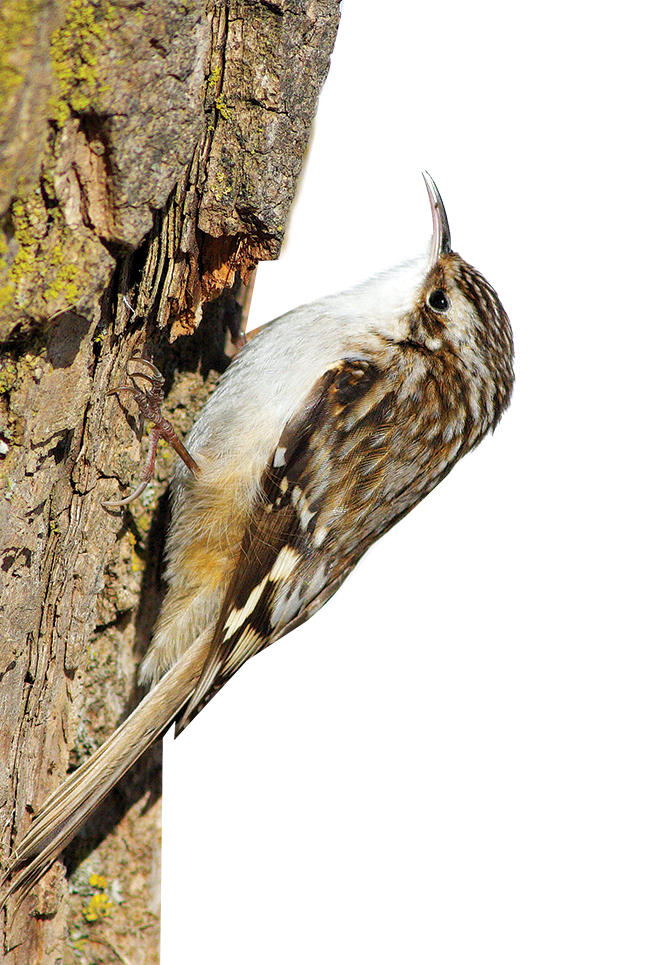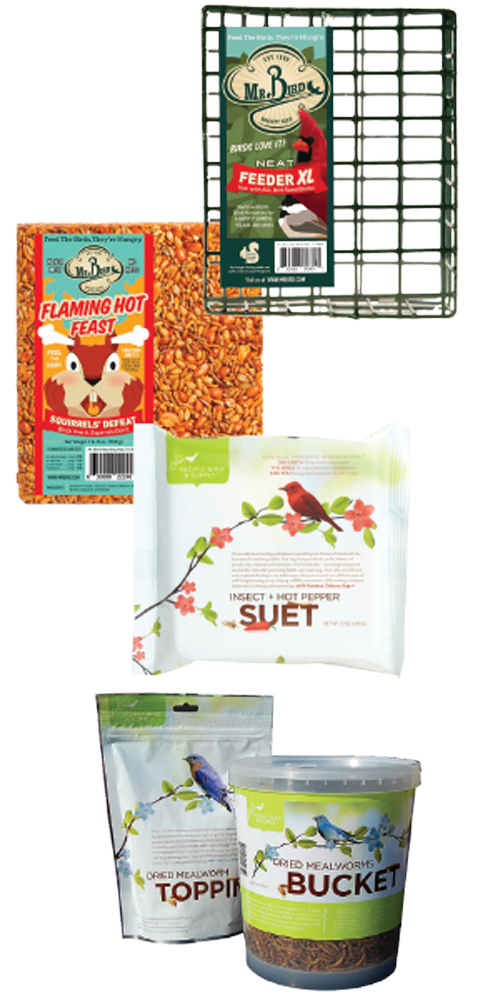Far from creepy, the delicate Brown Creeper sweetly spirals up tree trunks, in search of delicacies in the form of insects.Keep your eyes out for this winter visitor. Here’s more about this unassuming bird.
Appearance
Brown Creepers are so well camouflaged against the trunk of a tree that it is a special treat to spot them. They winter in the metro and along the southeastern edge of Minnesota.
These tiny woodland birds are slender, white from chin to belly, sport buffy eyebrows and are streaked brown and buff from beak to tail allowing them to blend into the visual contours of the tree bark. Creepers are monomorphic, meaning the male and female look alike. Brown Creepers are 5″ in length, the same size as the familiar Black-capped Chickadee.
Behavior and Diet
Brown Creepers seem to prefer the biggest trees in the area with deeply furrowed bark. Once you are familiar with their unique movements, they will be easier to spot.
Creepers forage from the base of a tree, hitching up the trunk in short jerky movements while spiraling around the tree. They hop with both feet at the same time which causes their heads to bob down after each hop. They will also search the main branches of larger trees.
The long, spine-tipped tail is used to brace against the tree trunk while their long, curved claws hook into the bark. The long, downward-curved and slender bill of the Brown Creeper is just the right tool for probing crevices and picking under loose bark. Brown Creepers forage for caterpillars, spider eggs, insects and larva. Once they reach the top of the trunk they fly to the base of the next tree and begin their spiral upward all over again.
Seasonal Habits
In winter, creepers often roost together and join flocks of other birds to forage during the day. When a predator such as a cat, Northern Shrike or hawk is near, creepers flatten themselves against the bark and remain motionless.
In the spring, the male helps to gather nesting materials and the female builds a hammock-like nest behind loose bark on a dead or dying tree in the pine-deciduous forests of northern Minnesota. They have one brood a year with the adult male feeding the female during incubation and both feeding the young.
Attracting
Though Brown Creepers eat mostly insects, they will eat suet, dried mealworms and shelled sunflower seeds. To attract them, mount a suet feeder to the tree trunk and fill with Flaming Hot seed cakes or Insect and Hot Pepper suet cakes. The hot pepper with deter the squirrels but will not bother the creepers, as birds have few taste buds. With luck you may host Brown Creepers this winter!
Article by Minnetonka Manager CAROL CHENAULT.
Adapted from the November/December 2022 edition of the Bird’s-Eye View Newsletter.



